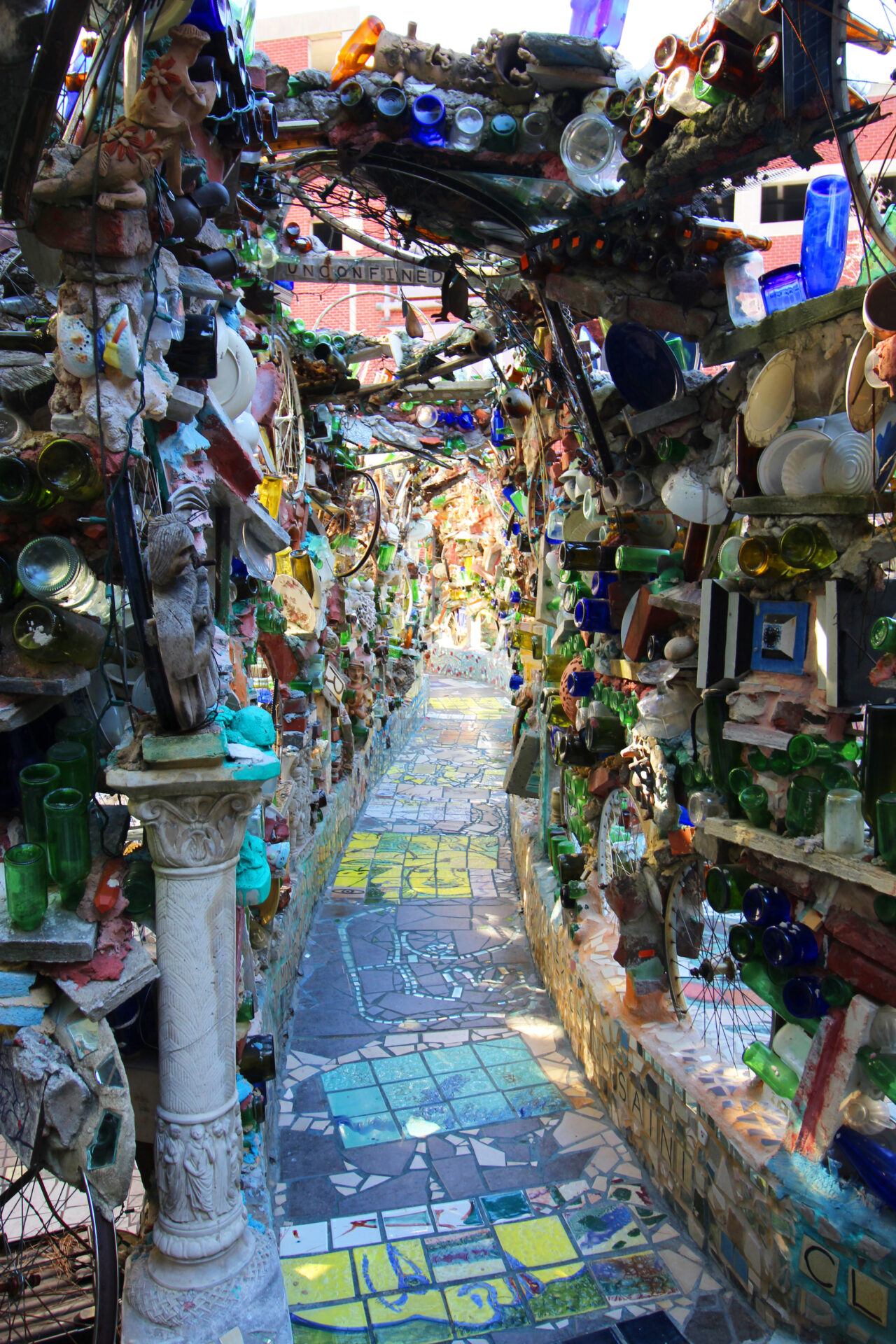This post was originally published on Colossal
All images © Philadelphia’s Magic Gardens, shared with permission
When mosaic artist Isaiah Zagar moved to Philadelphia’s South Street in the 1960s, he saw an opportunity to not only revitalize a neglected area but transform it into a haven for creatives. He established his studio there and was joined by a community of artists and activists who saw potential and wanted it to thrive, even preventing a major highway construction project that would have obliterated the neighborhood.
In 1991, Zagar began to work in a couple of vacant lots adjacent to his studio, initially coating the walls of the buildings on either side in colorful tesserae, then sculpting partitions and passageways through the center and creating an immersive art environment. But in 2004, the landowner decided to sell the property and called for the artwork to be dismantled.
The local community hastened to Zagar’s aid, helping to purchase the land. Soon, Philadelphia’s Magic Gardens was incorporated as a nonprofit with a mission to preserve the existing work for all to enjoy while allowing the artist to continue develop even more grottos, paths, and tunnels. “It’s incredible to see what one man’s mind created,” says preservation manager Stacey Holder. She continues:
It’s important to celebrate these places that are special in our towns and cities—these places that ignite curiosity and wonder. It’s locations like PMG that inspire creativity and innovation in our communities, and because of that, it’s crucial to protect and preserve them.

Photo by Fred Scruton
Sculpted metal, wood, and concrete forms entice us through maze-like passageways, meandering beneath arches, up steps, and alongside mixed-media assemblages crafted from found objects like glass bottles, bicycle wheels, dinnerware, and architectural elements. Many of the pieces interspersed throughout the gardens were collected by the artist and his wife Julie during their travels, especially in Mexico. Painted clay figures, carved wood, straw paintings, and metal assemblages by nearly two dozen artists are incorporated throughout the mosaics, many of which are commissions made collaboratively between Zagar and other artists.
Open to the public, the Magic Gardens hosts regular tours, workshops, performances, and temporary exhibitions. Currently in the process of revamping its indoor galleries, there will soon be a refreshed space to showcase work by visiting artists, with some new mosaics, too. And as 2024 marks the organization’s 20th anniversary, a slew of celebratory events will be announced in the coming months, which you can keep an eye out for on the website and Instagram.

Photo by Pinball Photos, LLC


Photo by Pinball Photos, LLC



Photo by Pinball Photos, LLC
Do stories and artists like this matter to you? Become a Colossal Member today and support independent arts publishing for as little as $5 per month. The article Explore Maze-Like Passageways Exploding with Elaborate Mosaics at Philadelphia’s Magic Gardens appeared first on Colossal.





0 Comments